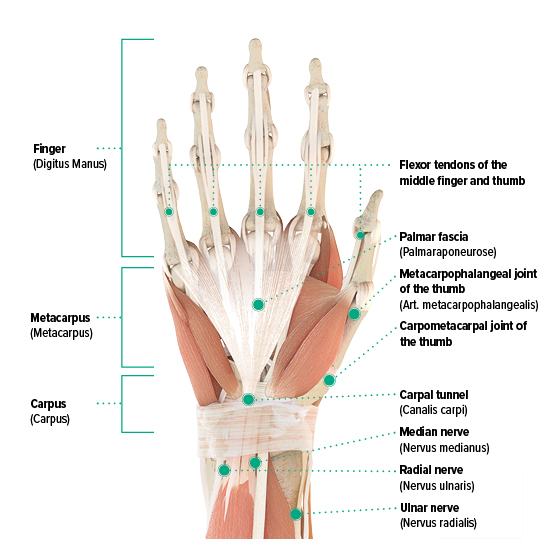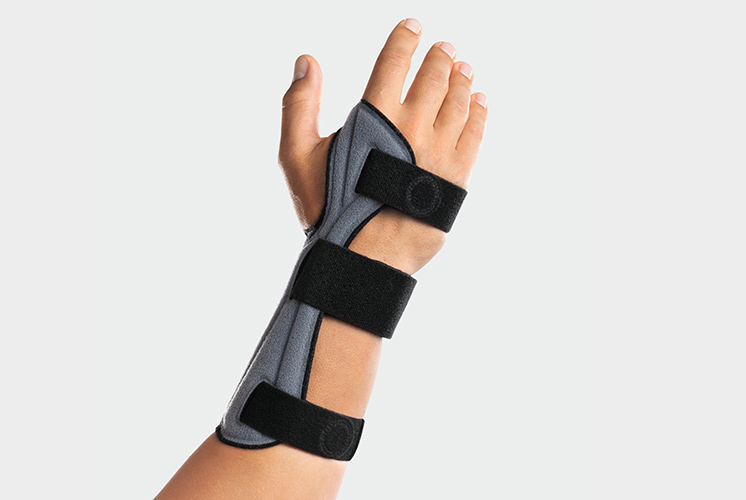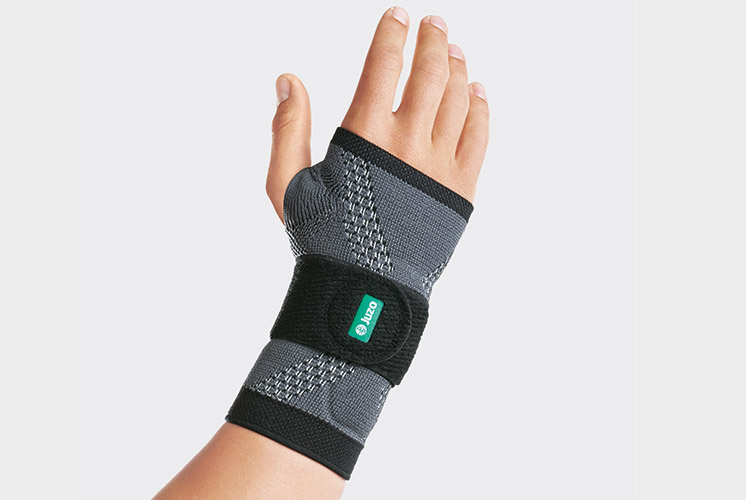Possible causes of pain in the palm and ball of the hand
Dupuytren's contracture
Dupuytren's contracture is a pathological alteration in the connective tissue whereby small nodules, lumps or strands form in the palm of the hand. These hardened clumps of tissue cause those with the condition to lose the ability to extend their fingers. The condition mostly affects men over the age of 50.
Tenosynovitis
The tendon sheath is the hollow passage that the tendon runs through. Inflammation often occurs due to strain, even in the area around the wrist. This manifests itself as severe stabbing or pulling pain that can also radiate to the back of the hand, and is often accompanied by swelling or redness. One classic symptom of Tenosynovitis is crepitus, an audible and palpable crunching noise reminiscent of the sound of walking over fresh snow.
Carpal tunnel syndrome
The carpal tunnel is a narrow passage in the wrist that the median nerve and the flexor tendons run through. Swelling can constrict the nerve, which can give rise to strong pain radiating into the hand, arm and shoulder, numbness in the fingers at night, muscle weakness and restricted function, as well as muscular atrophy on the thenar eminence (the mound at the base of the thumb – this is known as thenar atrophy).








